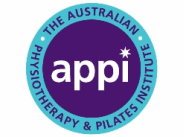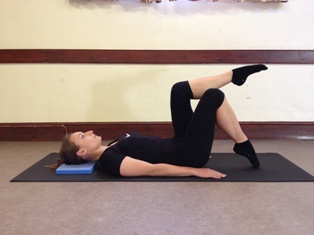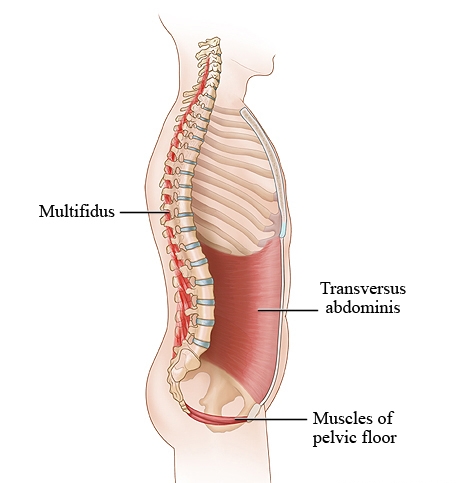
Pilates with Lucy - 5 Key Elements
"Patience and persistence are vital qualities in the ultimate successful acomplishment of any worthwhile endeavour" Joseph H Pilates
 The 5 Key Elements
The 5 Key Elements
- Lateral breathing
- Centering
- Ribcage placement
- Shoulder blade placement
- Head and neck placement
Lateral Breathing
Though your Pilates class you will learn the correct and natural way to breathe which will improve your breath pattern and depth, this is vital in order to get sufficient oxygen to working muscles to rid the body of waste products and delay the onset of fatigue. Many people only use a fraction of their lung volume and deny themselves the benefits of correct and efficient breathing.
Try this!
Lay on your back with your hips and knees bent up (rest position) Place your hands across the lower half of your ribcage with the tips of your fingers slightly interlaced. Breathe in and allow your ribs to expand widthways (let your fingertips draw apart) Breathe out and allow your ribcage to sink inwards and downwards (your fingertips may interlace slightly as you empty your lungs)
Imagine: - the back of your ribcage spreading wide on the mat beneath you.
Centering
Pilates aims to develop a strong central core of abdominal, lower back and pelvic floor muscles. These postural muscles support the spine, pelvis and abdomino-pelvic organs all day long.
Try this!

Finding your neutral spine position...
Lie in the rest position Place you thumbs on your belly button and your fingertips on the pubic bone 'pelvic diamond' Tilt your pelvic diamond away from you to exaggerate the curve in your lower back Tilt the pelvic diamond towards you to flatten your back Continue to repeat these gentle tilting movements Now position the pelvic diamond in the middle of these two positions, your 'neutral spine'
Imagine: - a silk scarf threading through the small hollow you have created
Setting your abdominal muscles
Remain in your neutral spine position Place your fingers on your pelvic bones and now slide your fingers I and downwards ~4cm Imagine your deep abdominal muscles forming a natural corset Breathe in to prepare now as you breathe out slowly and gently draw in the muscular corset below your belly button (you should feel the muscles under your fingertips subtly draw away) Hold your centre and keep breathing normally.
Ribcage placement
Ideally your ribcage should be aligned directly above your pelvis however many people tend to flare their ribcage forwards which can lead tom poor posture, stiffness, muscle tightness and pain.
Try this!
Lie in the rest position, find your neutral spine and set your centre. Breathe in to prepare and then breathe out and lift your arms slowly overhead as far as you can while keeping the back of your ribcage on the mat. Do NOT allow your ribcage to flare and think about softening your breastbone.
Imagine: - A set of springs from your ribcage to your pelvic bones, the tension in these springs should remain constant as your raise and lower your arms.
Shoulder blade placement
We need excellent stability around our shoulder blades for movement of our arms and neck.
Try this!
Lie in the rest position, find your neutral spine position and set your centre. Float your arms upwards towards the ceiling imagine you holding helium balloon between your fingertips) allow your arms to lift further upwards and glide your shoulder blades gently apart Breathe out and gently draw your shoulder blades back together without pinching them together.
Imagine: your collar bones are wide and smiling and your shoulder blades are wide on the mat below.
Head and neck placement
Our head and neck experience a lot of strain due to poor posture and placement. We need to be able to relax our deep neck flexors and work on lengthening the muscles at the back of the neck.
Try this!
Lie in the rest position and slightly tuck your chin towards your chest to lengthen the back of the neck. In sitting position try retracting your chin to make a double chin posture to stretch the muscles at the back of the neck.